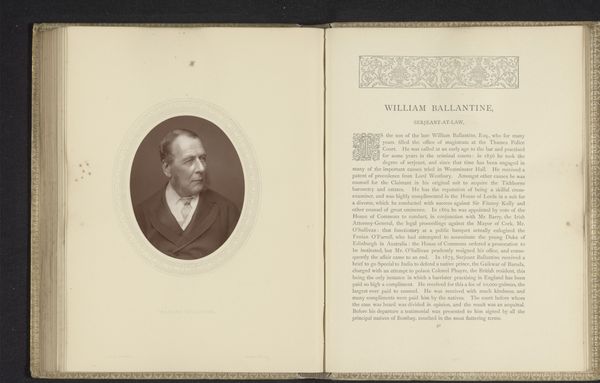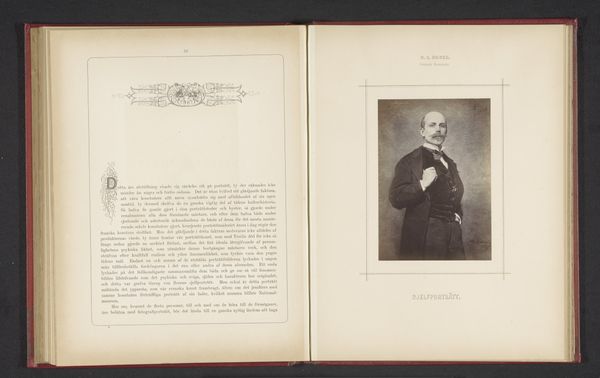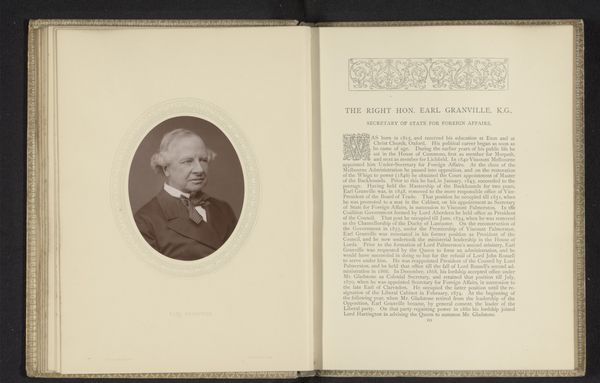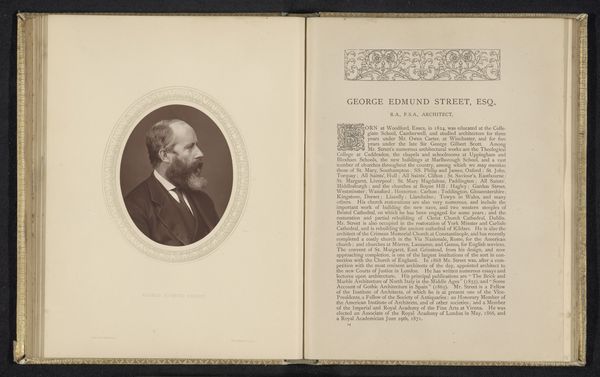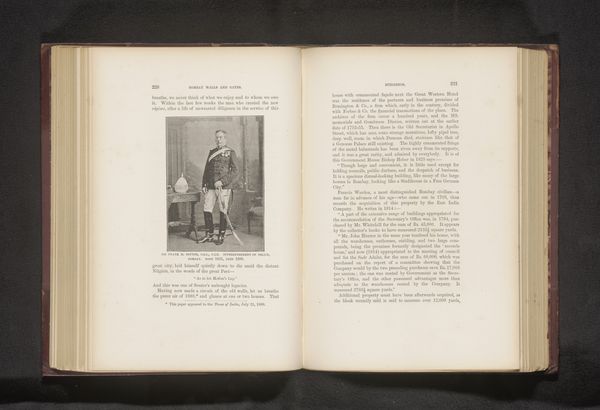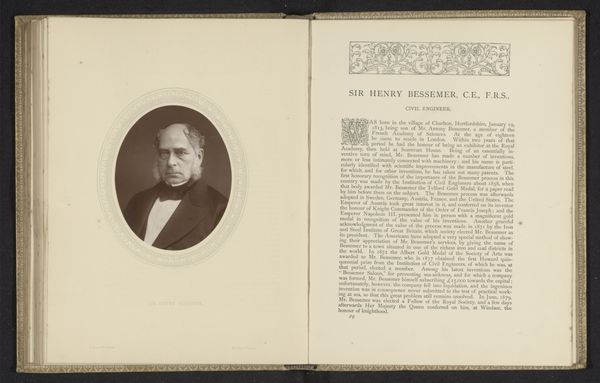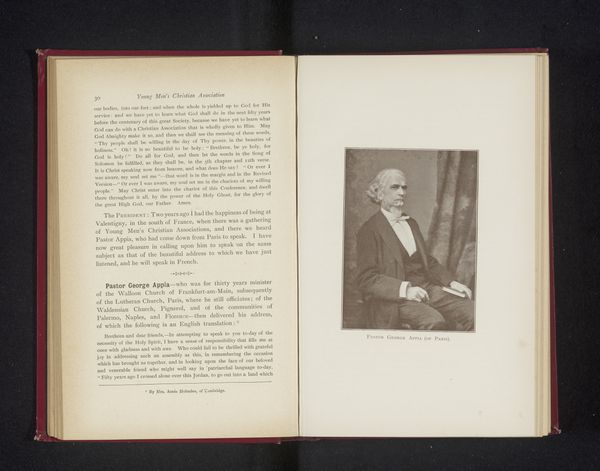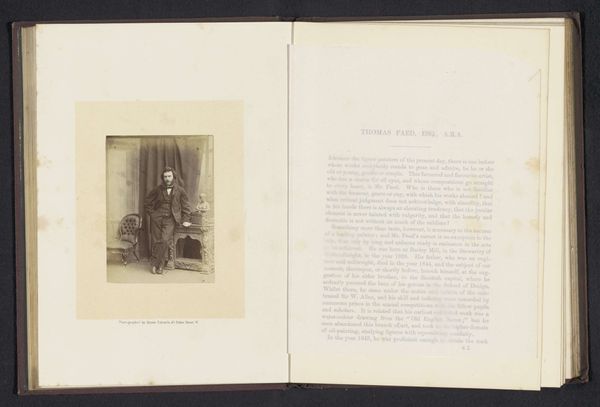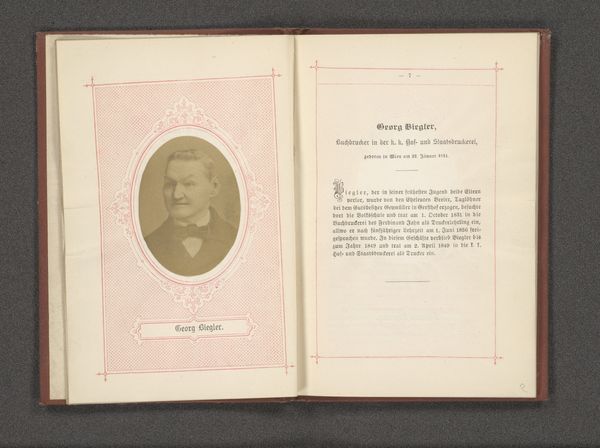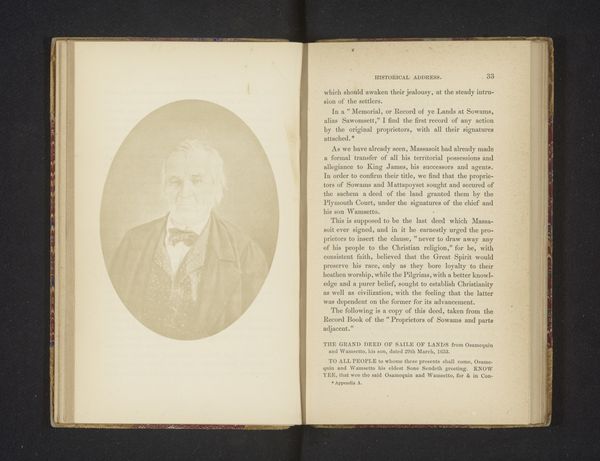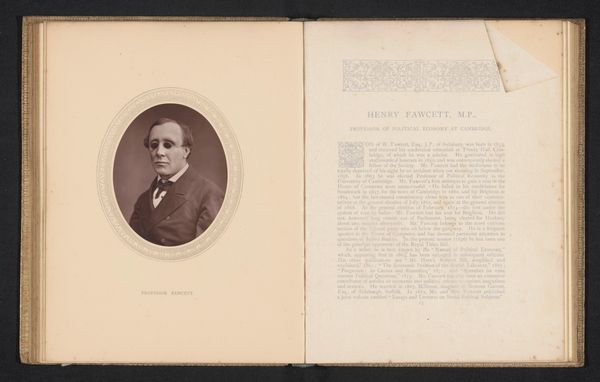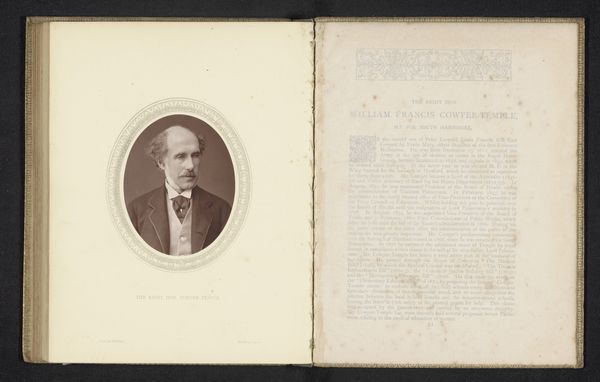
print, paper, photography
#
portrait
# print
#
paper
#
photography
#
history-painting
Dimensions: height 165 mm, width 117 mm
Copyright: Rijks Museum: Open Domain
Editor: This is an interesting image—it appears to be a printed portrait of a man, likely taken before 1898. The caption suggests it might be Charles de t'Serclaes. The sitter is presented rather formally, in dark clothing and some sort of sash. What can you tell me about this portrait and how to interpret its meaning? Curator: Looking at this image, I'm immediately struck by its potential to reflect the rigid social structures and power dynamics of its time. While ostensibly a portrait, it also performs as a historical document. Consider the subject's attire and pose. The formality, combined with what looks like a military or civic order, suggests a figure of authority, perhaps even tied to colonial administration, which was central to European identity. What do you notice about his expression and body language? Does it convey dominance, servitude, or something more complicated? Editor: I hadn’t really thought of it like that! He does appear rather stoic and controlled, perhaps even a bit detached. The monochrome palette certainly adds to the sense of gravity and historical distance. So, you are saying that the reading of an image depends heavily on a contextual awareness? Curator: Precisely. How can we unpack this man’s story to unveil the intersections of race, class, and political influence? Even details like his posture or the quality of the print provide crucial evidence to critically evaluate this photographic "truth" beyond what the image immediately communicates. How was he actively participating in maintaining certain social power structures, or alternatively, could he have been a figurehead with his own personal dilemmas? These details allow us to question traditional power structures prevalent when it was made. Editor: I understand. It seems we need to contextualize even seemingly straightforward images like portraits to reveal deeper social implications. I learned so much! Curator: And it’s those kinds of critical inquiries that keeps art history a relevant and transformative lens through which to examine our present.
Comments
No comments
Be the first to comment and join the conversation on the ultimate creative platform.
